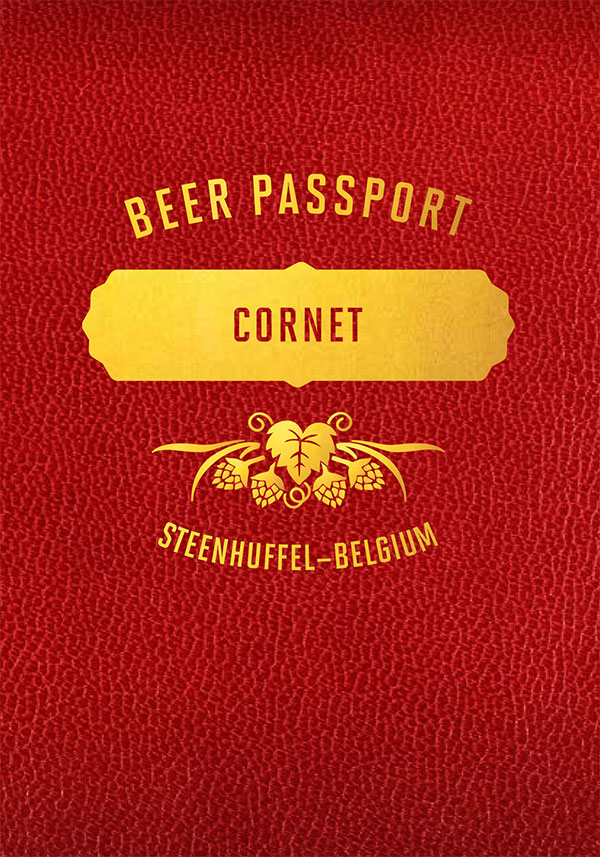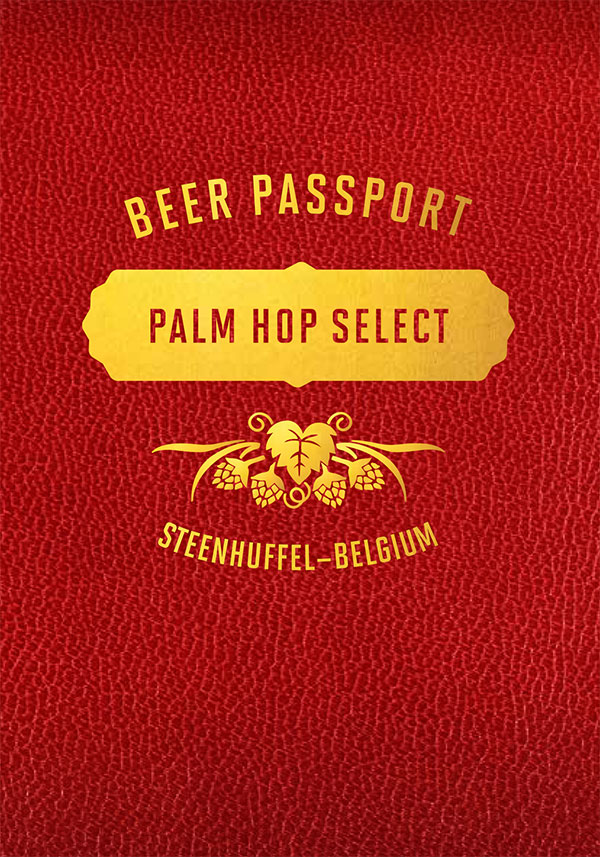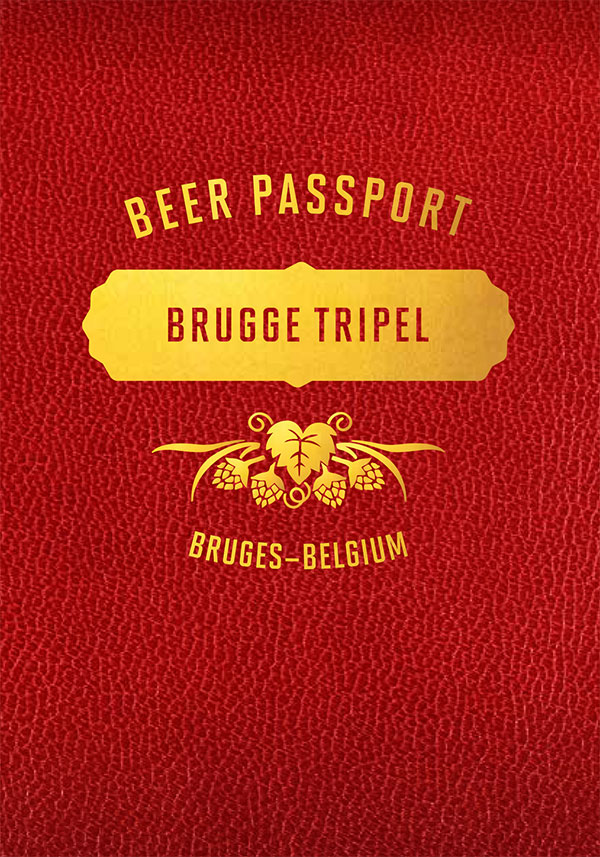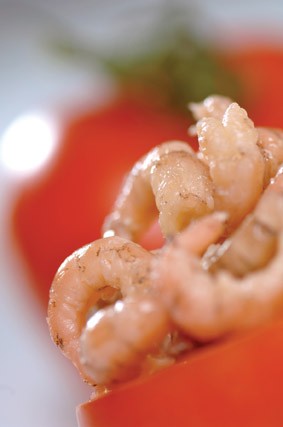


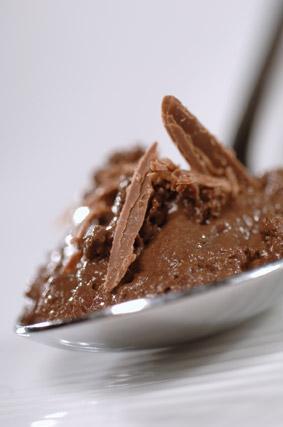
Thoroughbred beers in the gastronomy
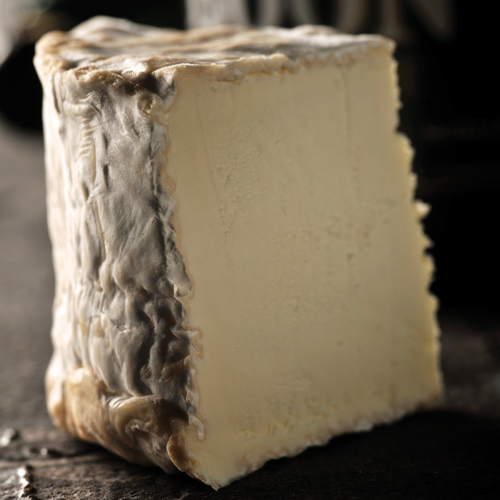
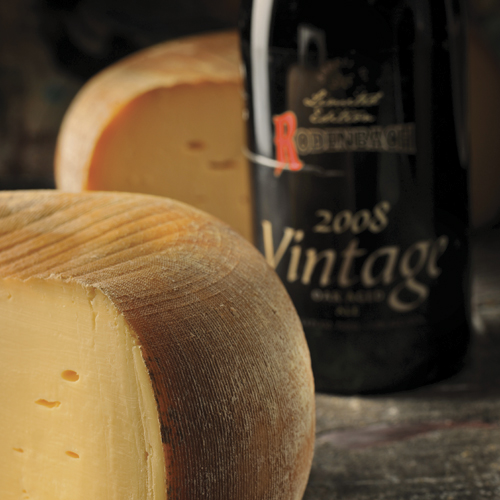
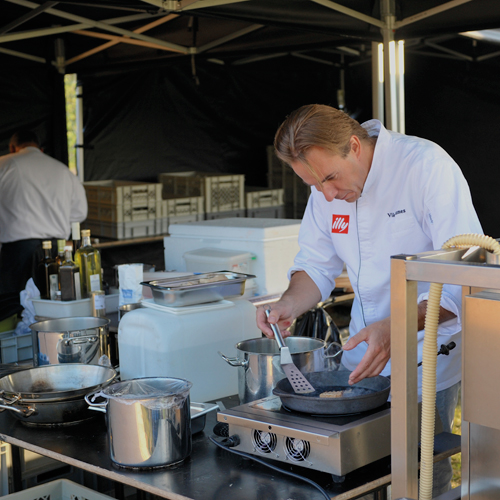
Beer has acquired a special place in the gastronomy in recent years. In part this is because more and more chefs nowadays are using beer in their contemporary creative cuisine, and in part because beer is increasingly being served with food in place of the traditional wine. This can be seen from the advent of specialist beer sommeliers and a separate beer list in restaurants.
BEER & FOOD PAIRING
Dishes made with beer
Beer can be used in two ways in dishes:
Beer as the foundation or an ingredient
Add the beer a bit at a time until its taste is subtly present but not overpowering. The bitterness of beer is intensified by cooking down, so you should use it judiciously.
Beer as an addition or extra flavouring
Adding a dash of beer at the end of the preparation process gives the dish – depending on the choice of beer – an extra sweet, sour, fruity, herby or bitter accent.
Dishes accompanied by beer
Beer is also a perfect partner for serving with food. Whether sour, sweet, salty, bitter, soft, dry, creamy, herby or fruity, every dish and every beer has its own specific taste accents. Depending on your personal preference, you can choose to have these accents:
- contrast with each other;
- complement (reinforce or supplement) each other;
- harmonise with each other.
Beer at receptions
As well as at the table, delicious food and drink are the key to a successful reception. Beer is increasingly taking the place of the traditional wine and champagne. After all, beer is more thirst-quenching and refreshing than wine, and it has moderate alcohol content. A selection of specialist beers is an excellent idea in order to offer something new. Our thoroughbred beers give your reception a special Belgian aura.
BEER & CHEESE PAIRING
Beer and cheese are simply made for each other. With its creamy, rich character, cheese forms a film over the taste buds. A mildly acidic and bitter drink such as beer is ideal for opening up the taste buds. Cheese also complements beer, which can sour, sweet or bitter but not salty. Combining different cheeses and different beers always leads to new, surprising flavour combinations.
Waarom authentieke combinatie kaas & bier blijft smaken
Kaas en bier: een authentiekere combinatie van vakmanschap bestaat haast niet. Het hoort al eeuwenlang tot de favoriete geniet-combo’s van de Belg en wordt nu zelfs nóg populairder. “Kwaliteitsproducten die je herinneren aan je jeugd, maar met een frisse 2015-twist: dát is wat mensen willen”, aldus smaakexpert Patrick Nijs. Deze trend inspireerde chef Viki Geunes dan ook om tien verrassend moderne bier&kaas-creaties te maken, van brunch tot aperitief.
Lees hier het volledig artikelTips for beer & food pairing
No matter whether you use beer in your dishes or as an accompaniment to your creations, there are several basic rules for successful combinations.
- The dish and the beer should have the same flavour content or flavour intensity. A light dish is best paired with a light beer, whilst a more robust dish needs a more robust beer with a pronounced character.
- If you opt for harmony, then sour, sweet and bitter should be present in equal amounts in both the dish and the beer.
- Even if you do not add beer to the sauce, the specific flavour of the sauce may be decisive for the choice of beer.
- In addition to the dish itself, the way it is prepared is important. Whether you choose a mild beer or a beer with a stronger character depends on whether the dish is stewed, baked or fried.
- Follow a logical sequence when selecting the dishes as well as the beers. Relatively mild, light beers are perfect with appetisers or starters; more characterful and stronger beers are more suited to main courses. Beers with a more specific sweet-sour or fruity flavour are a good choice for serving with desserts. In the course of the meal you should progress from relatively mild to more pronounced flavours and from low-alcohol beers to strong beers.
BEER & FOOD PAIRING SUGGESTIONS FROM THE CHEFS *
PALM
Bras pork cooked at low heat with marinated baked asparagus, baby potatoes
and a sauce with PALM beer.
Wim Ballieu
Stewed rabbit hams with apricots.
Jan Buytaert
PALM ROYALE
Crispy sweetbreads surrounded by spinach, green olives, ossobuco jus and
thyme aioli.
Wouter Van der Vieren
Barbecued glazed angler fish with baby tomatoes.
Geert Van der Bruggen
ESTAMINET
Beef tartare with herring caviar.
Jan Buytaert
Stir-fry with scampi and Vadouvan curry.
Jan Buytaert
RODENBACH
Scrambled eggs with shrimp.
Jan Buytaert
Grilled lobsters with pineapple.
Jan Buytaert
RODENBACH Vintage
Glazed pork with black tripe and liégeoise sauce.
Johan Segers
Baked Breton crayfish with a Thai salad, mango and spring onions.
Geert Van der Bruggen
BRUGGE TRIPEL
Grilled tarbot with crayfish and a puree of champignons and Jerusalem artichoke.
Viki Geunes
Hop shoots with a poached egg.
Bert Meewis
STEENBRUGGE TRIPEL
Warm Zeeland oyster with almonds.
Jan Buytaert
Veal sweetmeat nuggets with forest mushrooms.
Jan Buytaert
OUDE GEUZE BOON
Oysters with mild pickled kohlrabi, watercress juice with pistachio oil and green apple.
Wouter Van der Vieren
Broth with petits gris de Namur.
Jürgen Lycops
Viki Geunes
’t Zilte, Antwerpen

Jürgen Lycops
The Glorious, Antwerpen

Bert Meewis
De Slagmolen, Opglabbeek

Johan Segers <br/> 't Fornuis, Antwerpen

Geert Van der Bruggen
Lijsterbes, Berlare

Wouter Van der Vieren
Likoké, Les Vans

Wim Ballieu
Balls & Glory

Jan Buytaert
Chef-presentator Njam-tv

With thanks to: Foodprint, Jan Buytaert, URBANCRAFTS.TV
BEER & CHEESE PAIRING SUGGESTIES
- All beers
- PALM
- ESTAMINET
- RODENBACH
- BRUGGE
- STEENBRUGGE
- BOON
- CORNET
PALM
Beaufort Alpage: A hard cheese from the French Alps made from unpasteurised cow’s milk.
Fruity and spicy.
Vanillien: A natural cheese from Normandy made from unpasteurised goat’s milk.
Fresh, acidic with a touch of vanilla.
Dobbel PALM
Cheddar cranberries
Fromage de Herve
Fourme d'Ambert
Comté 6 mois
Torta de Oveja: A soft cheese from Salamanca made from unpasteurised ewe’s milk.
Fresh and acidic.
Le Petit Biquet: A smear-ripened cheese from Hainaut made from unpasteurised goat’s milk.
Strong and vivacious.
PALM Royale
Gorgonzola: A blue cheese from Piedmont made from pasteurised cow’s milk.
Creamy, slightly bitter.
Époisses Berthaut: A smear-ripened cheese from Burgundy made from pasteurised cow’s milk.
Strong and rounded.
Gabarre: A natural cheese from the Loire region made from unpasteurised goat’s milk.
Dry and rounded.
PALM Hop Select
Petite fleur with herbs
Taleggio
Grevenbroecker
Le palet du berry
Pas de Rouge
Herve Le Vieux Moulin: A smear-ripened cheese from the Herve region made from unpasteurised cow’s milk.
Strong, vivacious and piquant.
Camembert Le Gaslonde: A soft-ripened cheese from Normandy made from unpasteurised cow’s milk.
Salty and rounded.
ESTAMINET
Keiems Bloempje: A soft-ripened cheese from Keiem made from unpasteurised cow’s milk.
Mild and vivacious.
Chaource: A soft-ripened cheese from Burgundy made from unpasteurised cow’s milk.
Mild and acidic.
RODENBACH
Bruges cheese matured in RODENBACH beer: A hard cheese from Moorslede made from cow’s milk.
Hard and rounded.
Écume de Wimereux: A soft-ripened cheese from Nord-Pas-de Calais made from pasteurised cow’s milk.
Creamy and fresh.
RODENBACH Grand Cru
Le coq Mortelmont
Gorgonzola cremoso
Rotselbes
Cheddar
Mothais sur Feuille: A natural cheese from the Loire region made from unpasteurised goat’s milk.
Fresh and acidic.
St. Marcelin: A soft-ripened cheese from Rhône-Alpes made from unpasteurised cow’s milk.
Salty and acidic.
RODENBACH Vintage
Pas de Rouge: A hard cheese from Hinkelspel, Ghent made from unpasteurised cow’s milk.
Bitter and salty.
Neufchâtel: A soft-ripened cheese from Normandy made from unpasteurised cow’s milk.
Salty and acidic.
Le St. Uguzon: A soft-ripened cheese from Le Chevret Chimacien cheese makers made from unpasteurised goat’s milk.
Salty, rounded and vivacious.
RODENBACH Caractère Rouge
Mamé Vî Bleu: A blue cheese from Namur made from unpasteurised cow’s milk.
Bitter and salty.
Aged Stilton: A blue cheese from Nottinghamshire made from pasteurised cow’s milk.
Bitter, salty and vivacious.
BRUGGE Tripel
Neufchâtel fermier
St. Bernardus
Stilton marinated in Port
Pecorino
Sopdio
Li Petit Rossê: A smear-ripened cheese from Liège made from unpasteurised cow’s milk.
Spicy and vivacious.
Noord-Holland Gouda: A hard cheese from Gouda made from pasteurised cow’s milk.
Salty and rounded.
Campoestrella: A hard cheese from Zamora made from unpasteurised ewe’s milk. Matured for 9 months.
Earthy, nutty, fresh and slightly fruity.
STEENBRUGGE Blond
Pouligny St.Pierre: A natural cheese from the Loire region made from unpasteurised goat’s milk.
Rounded and acidic.
Pelardon: A natural cheese from Provence made from unpasteurised goat’s milk.
Rounded and acidic.
STEENBRUGGE Dubbel Bruin
Maconnais: A natural cheese from Burgundy made from unpasteurised goat’s milk.
Dry and rounded.
Grevenbroecker: A blue cheese from Limburg (Belgium) made from unpasteurised cow’s milk.
Slightly bitter and vivacious.
STEENBRUGGE Tripel
Mimolette: A hard cheese from Nord-Pas-de-Calais made from unpasteurised cow’s milk.
Hard, rounded and dry.
Comte Fort St. Antoine: A hard cheese from the Jura made from unpasteurised cow’ milk.
Fruity and salty.
STEENBRUGGE Wit-Blanche
Blankaart: A soft-ripened cheese from Keiem made from unpasteurised cow’s milk.
Mild and acidic.
Mont Ventoux: An ash-coated cheese from Provence made from unpasteurised goat’s milk.
Mild and acidic.
STEENBRUGGE Abdij Bock
Stilton: A blue cheese from Nottinghamshire made from pasteurised cow’s milk.
Bitter, salty and vivacious.
Mont des Cats: A French monastery cheese.
Vivacious and mildly acidic.
Oude Geuze BOON
Salers: A hard cheese from the Auvergne made from unpasteurised cow’s milk.
Earthy and rounded.
Brillat Savarin: A soft-ripened cheese from Ile-de-France made from unpasteurised cow’s milk.
Rounded and creamy.
Oude Kriek BOON
Rossini Erborinato: A blue cheese from Piedmont made from pasteurised cow’s milk.
Bitter, fruity and rounded.
Bio Bleu: A blue cheese from Ghent made from unpasteurised cow’s milk.
Bitter and salty.
Framboise BOON
Plaisir du Berger: A natural cheese from Liège made from unpasteurised ewe’s milk.
Fresh and acidic.
Dôme de Boulogne: A soft-ripened cheese from Nord-Pas-de-Calais made from unpasteurised cow’s milk.
Dry and acidic.
CORNET
Camembert de Normandië
Pastor
Pas de Bleu
Tomme de savoie
Frédéric Van Tricht
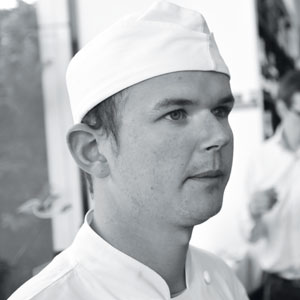
Michel Van Tricht


